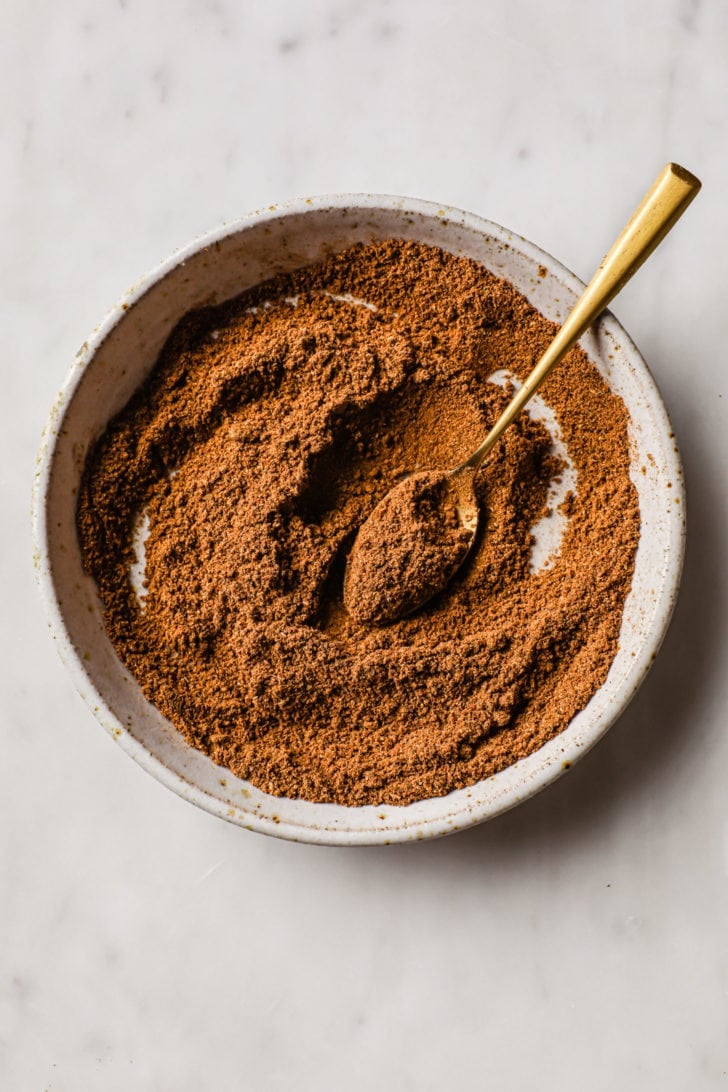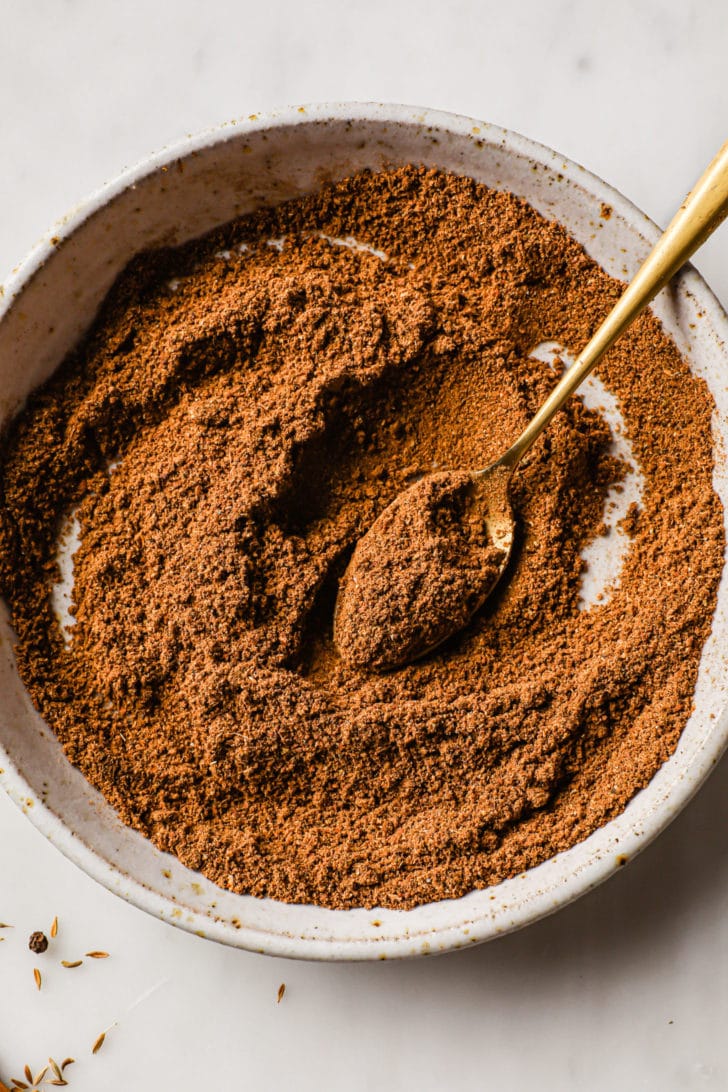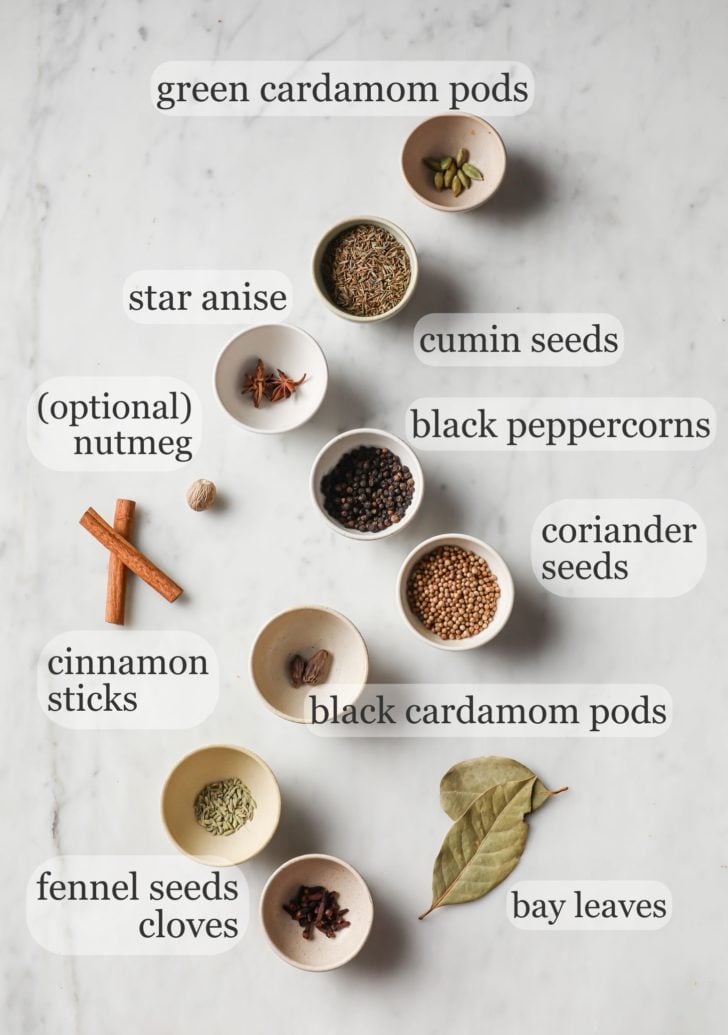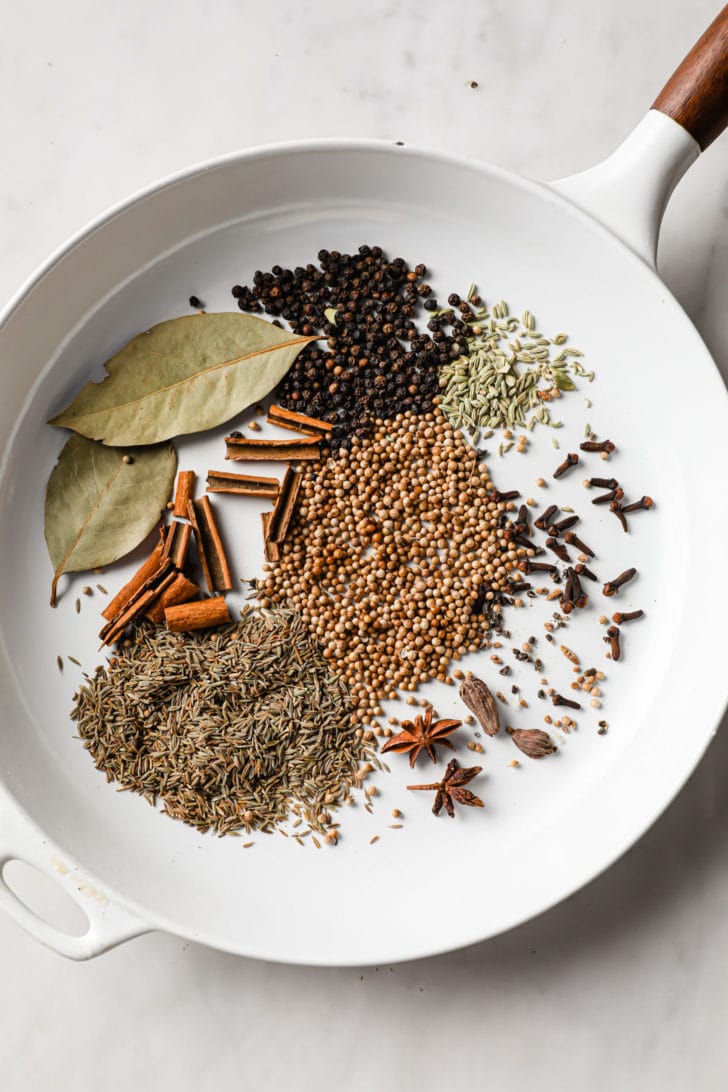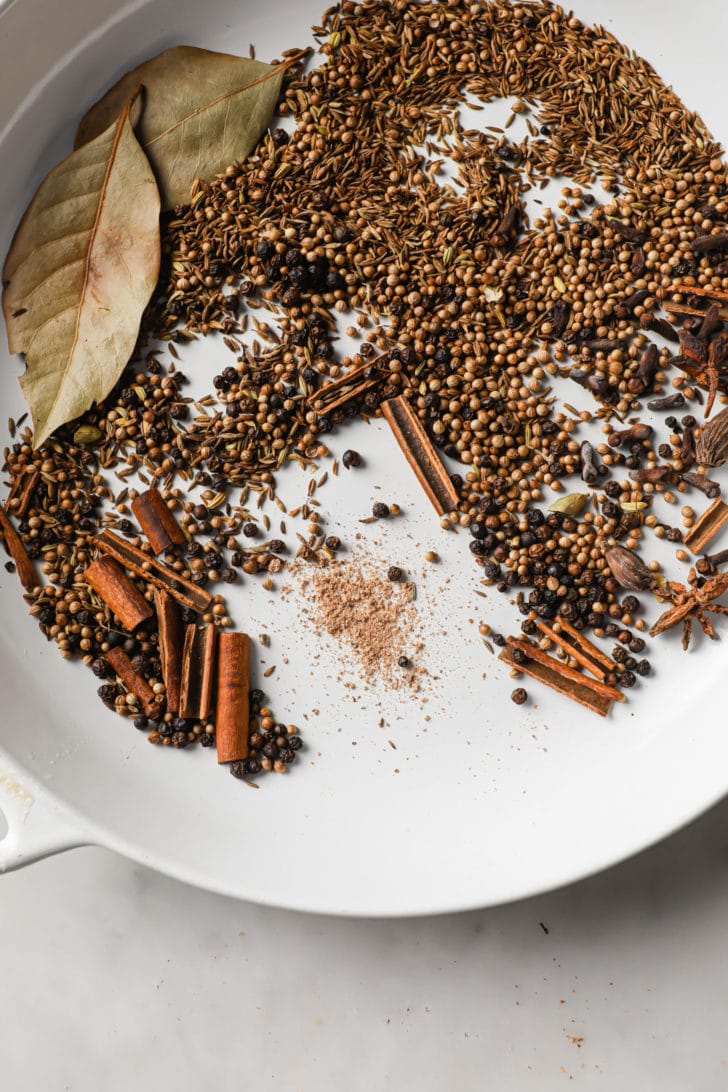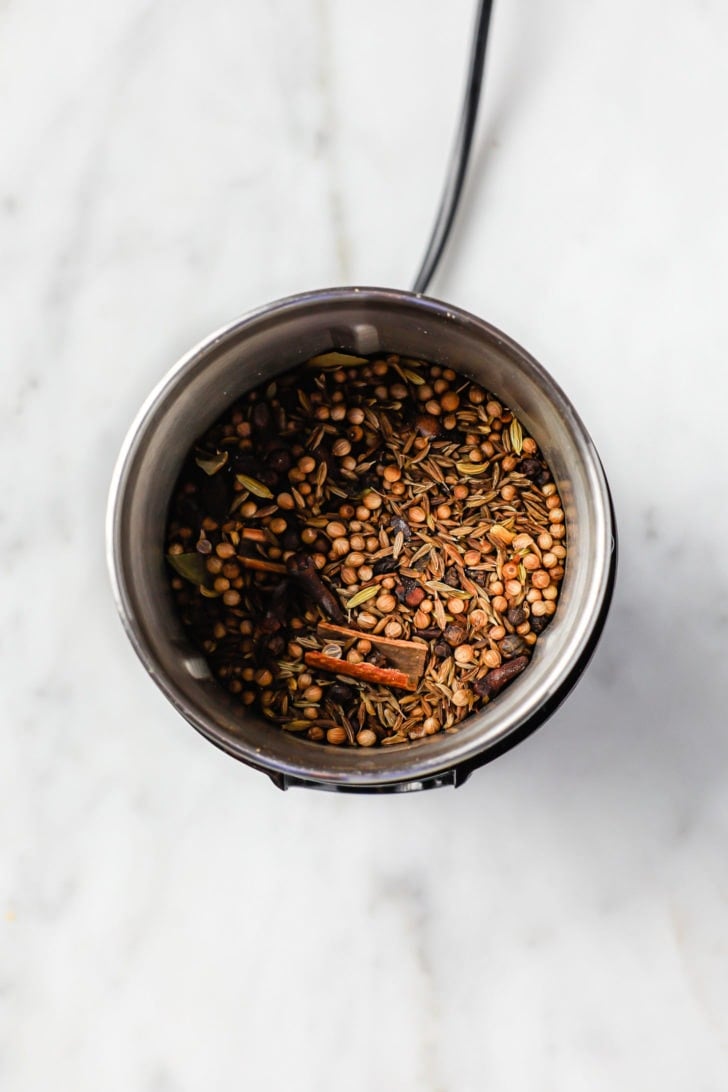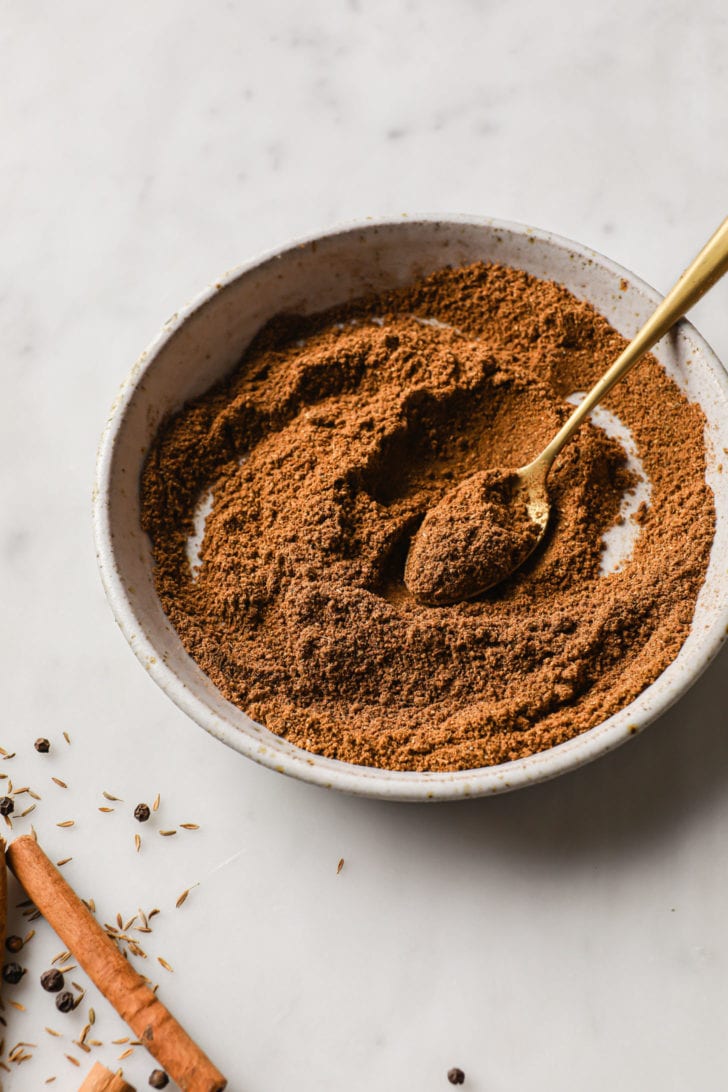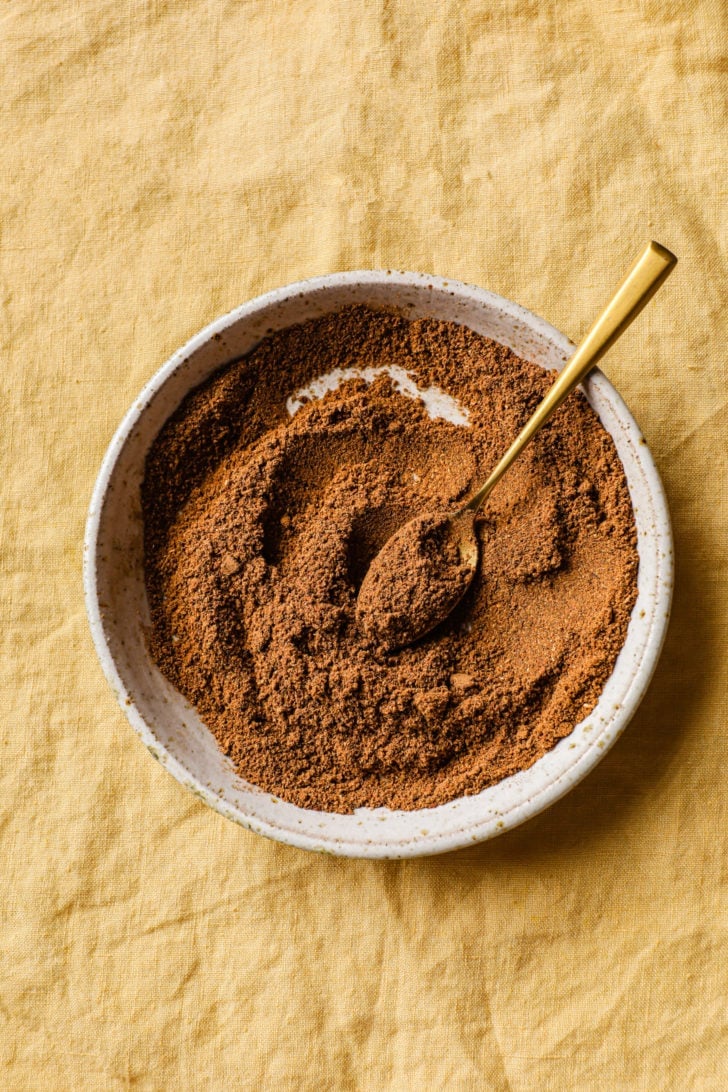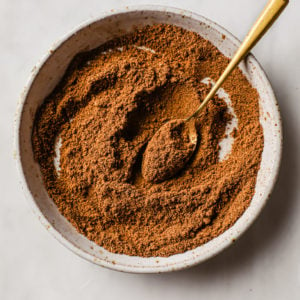What is Garam Masala?
The word garam means ‘warm or hot’ and masala translates to ‘spices or blend’. As the name suggests, Garam Masala is a warming spice blend made by toasting and grinding whole spices. Enter your email below and get it sent straight to your inbox. Plus, get recipes & tips every week! I’m quite fluid when it comes to homemade Garam Masala. I’m not sure there’s any magic ratio of spices. I have no secret family recipe and I probably won’t ever make it in a ‘fixed way’. But, I’ve made garam masala many times with many different recipes and here are a few things I’ve learned: Spice snobs unite! If you love making your own homemade South Asian spice blends, try my easy Chaat Masala blend or learn all about making & using your own cumin and coriander powder!
The 5 Essential Spices in Every Authentic Garam Masala Recipe
I analyzed over 10 Indian cookbooks to see what the most common spices are for garam masala. Almost every garam masala recipe had these 5 essential spices: After these, you’ll often see green cardamom pods (even if black cardamom pods are used), coriander seeds, bay leaves, and mace. Less common are fennel, star anise, and nutmeg. And even fewer recipes use black cumin, poppy seeds, and dried chilis. Interesting fact: The essential 5 also happen to be the main spices used in Punjabi garam masala. This may be a helpful way to think of Garam Masala: Each spice has a knob that you can dial up or down to change the intensity of that particular spice. There is no right or wrong, it’s just what you prefer.
Garam Masala Ingredients
Here are the whole spices you’ll need for this recipe. It’s perfectly okay if you don’t have all of these spices. Use what you have and you’ll find the freshness alone makes this aromatic spice blend better than any store-bought blend.
Black peppercorns: An essential for garam masala, black pepper lends it warmth and sharpness. Black cardamom pods: These are larger and stronger than green cardamom pods. Unlike green cardamom pods, they’re always used whole. If you break them open, you’ll find seeds similar to green cardamom pods. Substitute: If you don’t have black cardamom, increase the amount of green cardamom. Coriander seeds: Though too much clutters the aromatic spices, using coriander ‘tones down’ the garam masala and makes it more versatile. Cumin seeds: Some blends use black cumin seeds (shah zeera or kaala zeera), which are more robust and pungent compared to regular cumin seeds. If you’d like to use them, replace the cumin seeds with 1/2 of the quantity (or 1 tbsp) of black cumin seeds. Cinnamon sticks: Another garam masala essential. I typically use ceylon, but cassia is fine. Break up the cinnamon sticks to help them toast evenly and make them easier to grind in the spice grinder. Cloves: Another absolutely essential sweet and savory spice that adds texture and depth to the blend.
Green cardamom pods: When using green cardamom pods, discard the pod and use the seeds. Fennel seeds: I debated if I should make this an optional ingredient. Fennel is not one of the essentials but it adds a subtle, sweet aroma. (Also used in: Nihari) Star anise: Star anise imparts a beautiful, sweet fragrance without actually sweetening the blend. (Also used in: Biryani) Bay leaves: I can’t pinpoint any strong flavor of the bay leaves. Like several of the non-essential spices, it simply adds complexity to the final blend. Mace blade (optional – not pictured): If you use it, a small blade of the whole flower-like mace piece will be enough. You can also use a pinch of pre-ground mace and add it along with the nutmeg. (Also used in: Korma) Nutmeg (optional): If using a fresh nutmeg pod, grate it like you would zest a lemon. Sub a pinch of pre-ground nutmeg powder.
How to make Garam Masala Powder
Here’s how to make homemade garam masala in 3 easy steps:
Garam Masala Uses
This recipe can be used in any recipe (mine or otherwise) that calls for garam masala. Depending on the recipe, you may have to adjust the amount it calls for.
When to add
Because the spices are already toasted/cooked, you can add garam masala once you’ve finished cooking. Tip: An indication that a curry has finished cooking is when you can see the oil resurfacing and separating from the masala of the curry. That’s when you’ll turn the heat off and add Garam Masala as a finishing touch along with cilantro, lemon, or other garnishes. That said, many recipes (such as my Seekh Kebab) call for for this aromatic seasoning earlier in the dish and it can even be used as a marinade.
How much to add
Less is more when it comes to Garam Masala. Because it’s more fragrant than other spices, it’s better to start with a smaller amount (1/4 tsp) and increase as needed (up to 1/2 tsp). I wouldn’t use more than 3/4 tsp of this Indian spice mix in any curry as it’ll start to overpower the flavor.
Recipes that use Garam Masala
Baked Pakistani Seekh Kabob (Ground Beef Skewers) Authentic Instant Pot Chicken Curry Chana Masala (Authentic Chickpea Curry) Pakistani Beef Kofta Curry (Meatball Curry)
Tried this recipe? If you have a minute, please consider leaving a comment telling me how it was! You can also take a quick picture and upload it directly into the comments. If you’re on Instagram, please tag me so I can see your creations. I truly love hearing from you. Thank you!
